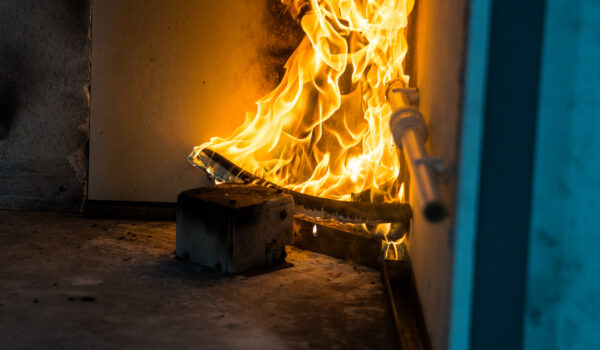Plastic Under Fire | The Hidden Dangers Lurking in Your Walls
Imagine you’re fast asleep in your bed. Suddenly, you’re jolted awake by the sound of a fire alarm. Smoke is filling your home, and you need to get out, fast. But as you try to navigate through the thick, acrid smoke, you realise you can’t see more than a few inches in front of you. Your lungs burn with every breath. What’s causing this rapid spread of smoke and toxic fumes? The answer might surprise you; it could be the pipes running through your walls.
Putting Pipes to the Test
In a groundbreaking series of tests carried out alongside Warrington Fire, an independent third-party testing facility. CuSP has shed light on a critical yet often overlooked aspect of building safety – the fire performance of different piping materials. These tests, conducted in laboratory conditions, simulated real-world fire scenarios to measure how various pipe materials respond when exposed to flames.
Warrington Fire conducted two crucial tests on four different pipe materials:
- A smoke test showcasing the chemicals emitted by each material (toxicity)
- A single burning item test to demonstrate how quickly each material burns
The materials tested were:
- Corrugated Stainless Steel Tubing (CSST)
- Cross-linked Polyethylene (PEX)
- Multi-Layer Composite Pipe (MLCP)
- Copper
The results? Nothing short of alarming.
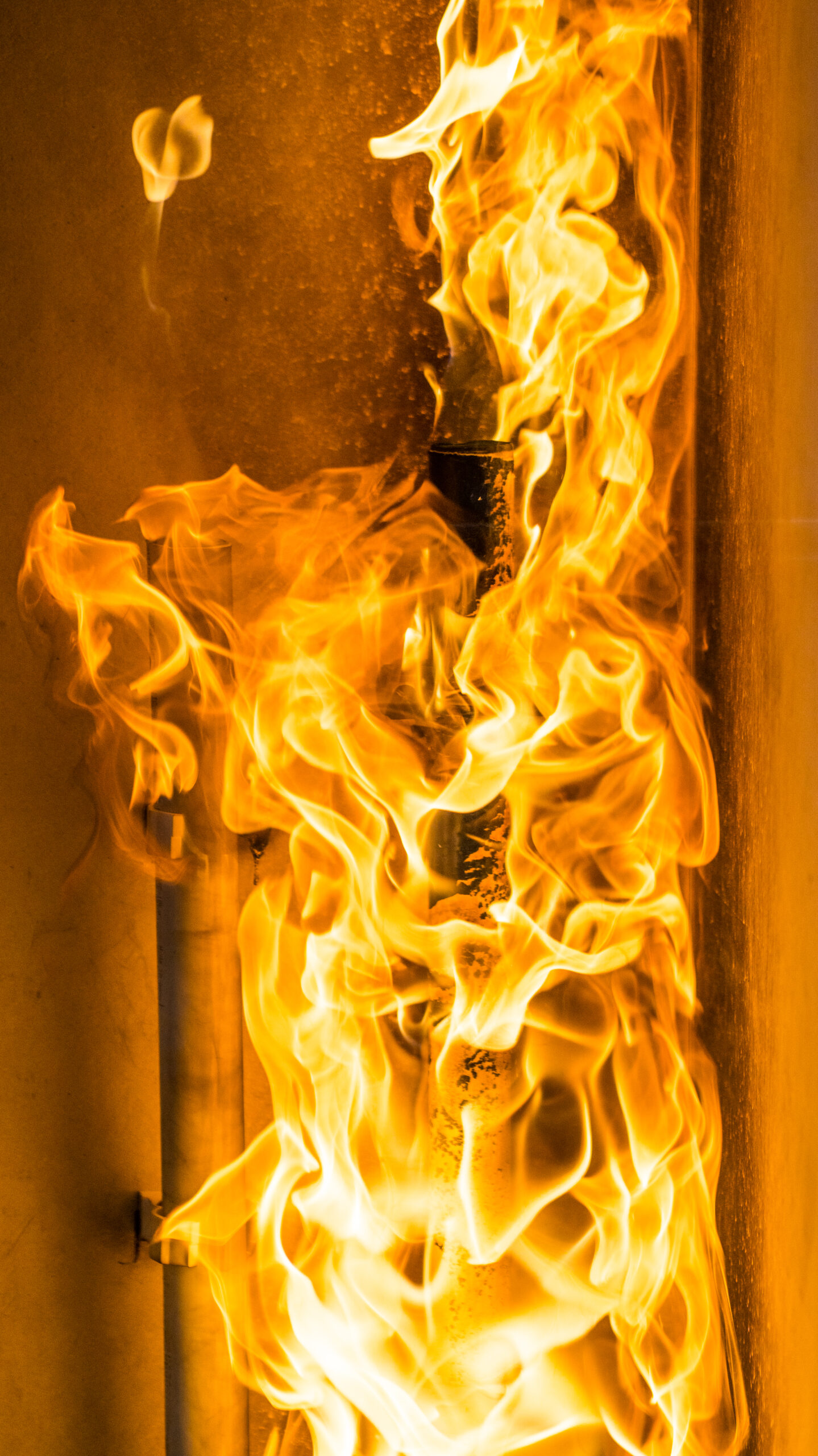
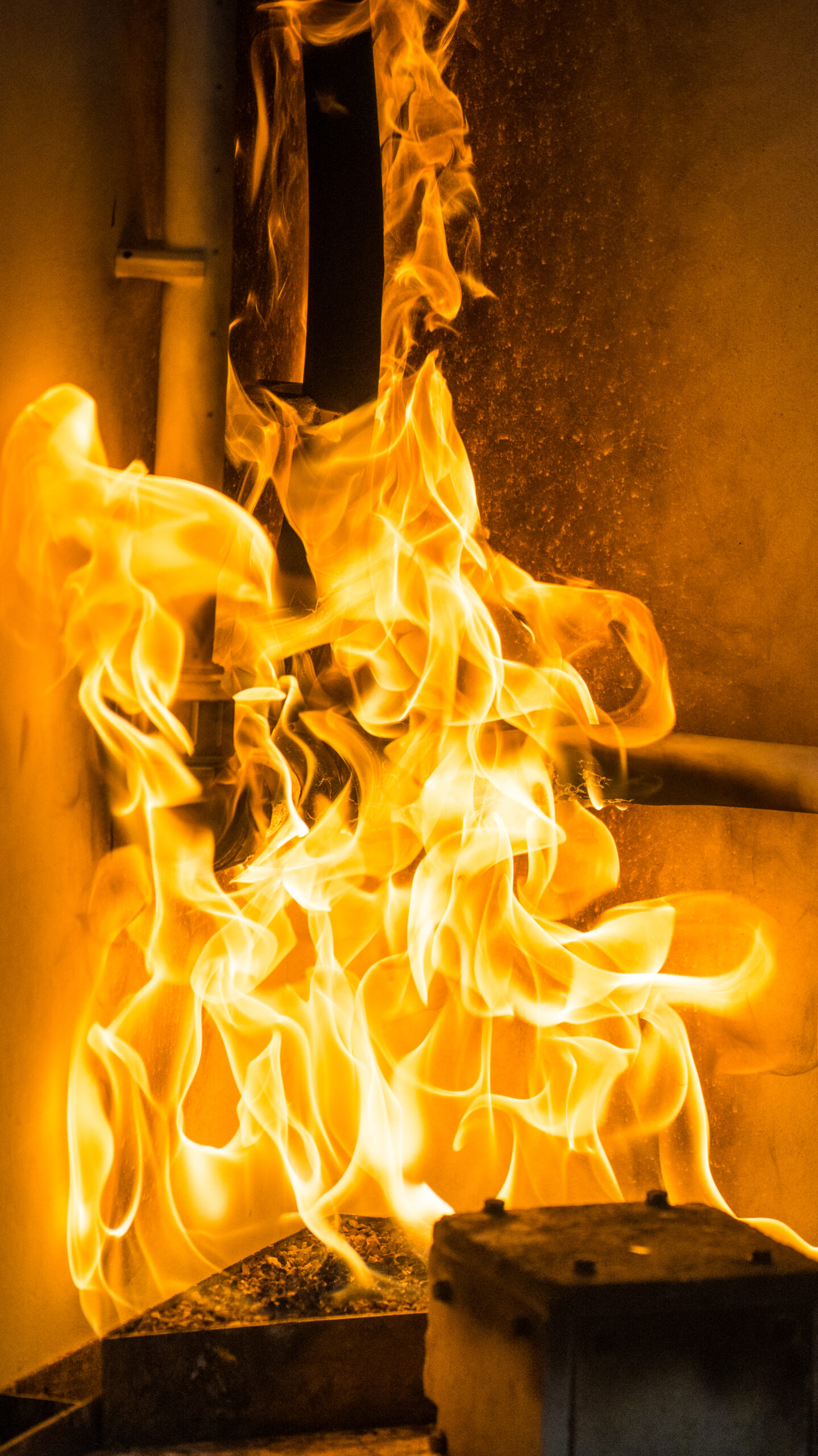
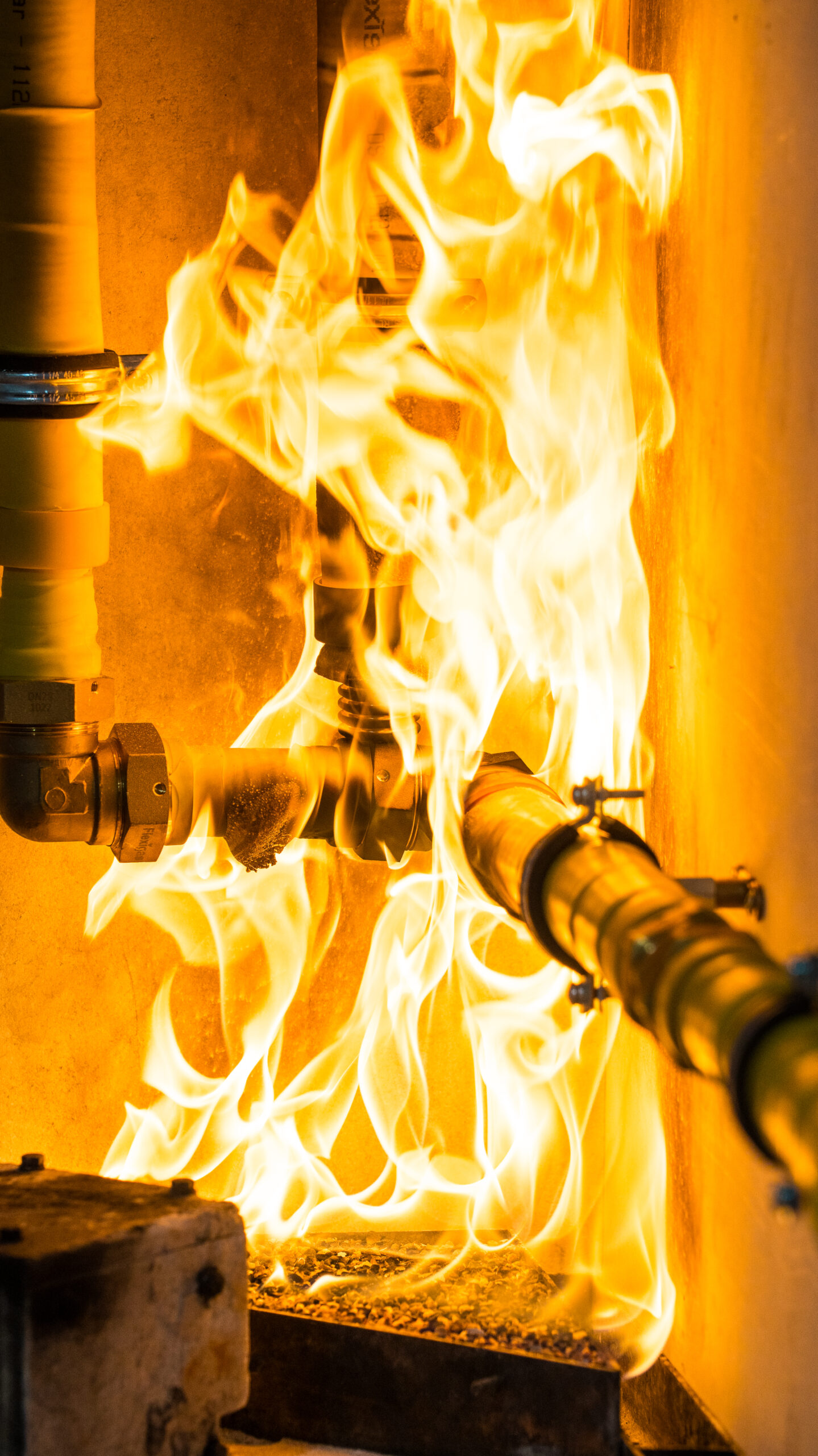
Smoke Production
One of the most critical factors in surviving a fire is the ability to see and breathe while escaping. The smoke density test results reveal a stark and frightening contrast between plastic-based pipes and copper:
| Material | VOF4 Value |
| CSST | 761 |
| PEX | 507 |
| MLCP | 291 |
| Copper | 0 |
Let’s break this down:
- CSST, despite being metal, has a plastic coating that produces an enormous amount of smoke initially (VOF4 value of 761) – 761 times more smoke than copper in the first four minutes.
- PEX, a fully plastic pipe, produces the highest smoke density over time (VOF4 value of 507) – and 507 times more smoke than copper in the first four minutes.
- MLCP, another plastic-based pipe which is constructed from several layers of different materials, typically PEX and aluminium, also produces significant smoke.
- Copper, in stark contrast, produces virtually no smoke at all, with a VOF4 value of 0 in the first four minutes.
What does this mean in real-life terms? Imagine trying to escape your home when it’s filled with smoke which is as dense as that produced by CSST or PEX pipes. You may struggle to see your hand in front of your face, let alone find the exit. This smoke could trap you in your own home, turning it into a deadly maze.
Not only could you not see, the higher smoke density from plastic pipes also accelerates the fire spread by preheating surrounding areas.
You wouldn’t have a bonfire in your house, so why have plastic pipes? The smoke from these pipes could create an effect similar to having a bonfire indoors during a fire.
The Toxicity Index
To get a full view of the overall toxicity of emissions, scientists use the Conventional Index of Toxicity (CIT):
| Material | CIT Value at 8 minutes |
| PEX | 0.10 |
| MLCP | 0.06 |
| CSST | 0.06 |
| Copper | 0.00 |
PEX pipes are the most toxic in a fire. This could be fatal if installed in your home. The toxicity of plastic pipes increases more rapidly over time compared to copper, which shows no measurable toxicity.
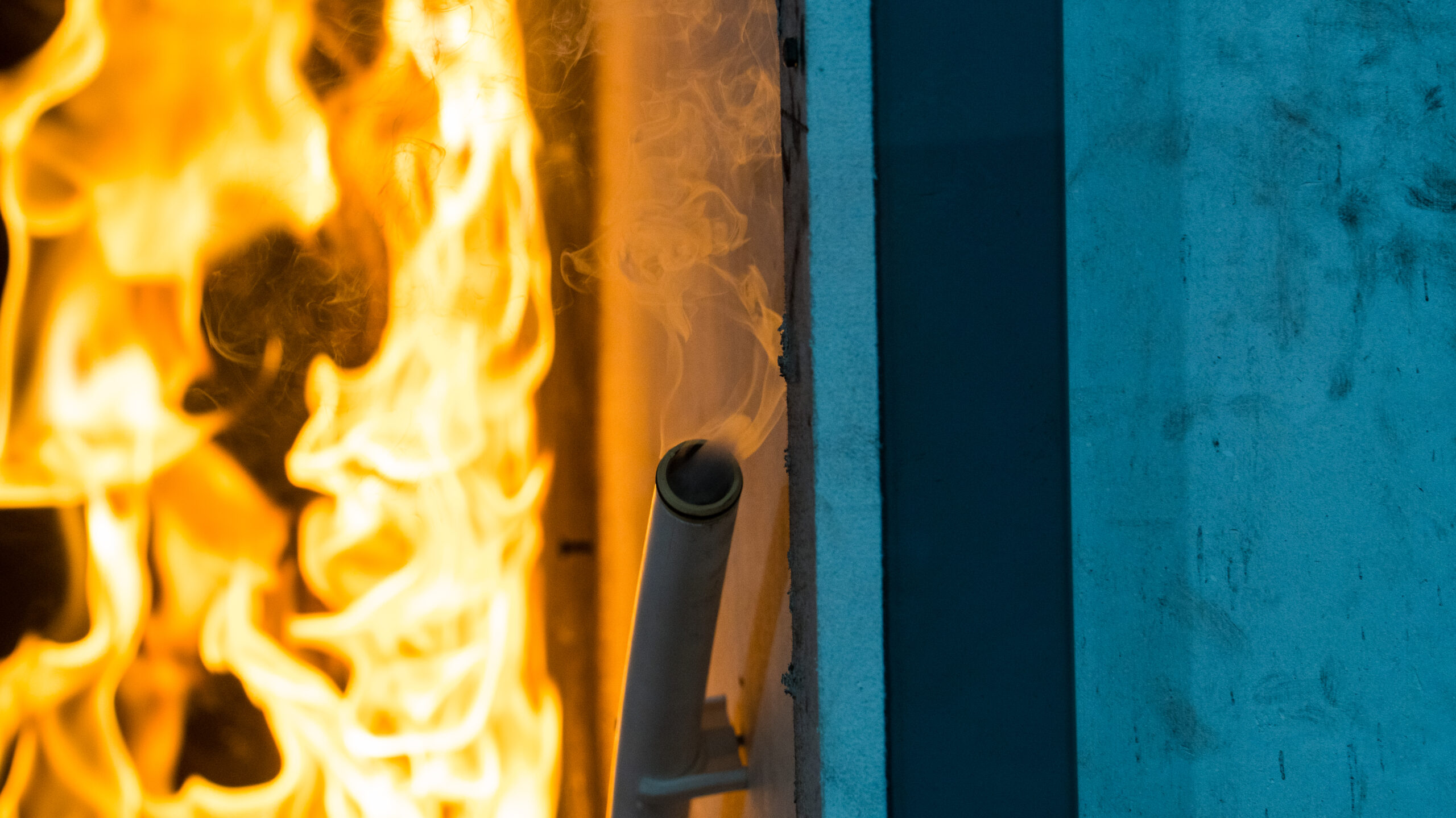
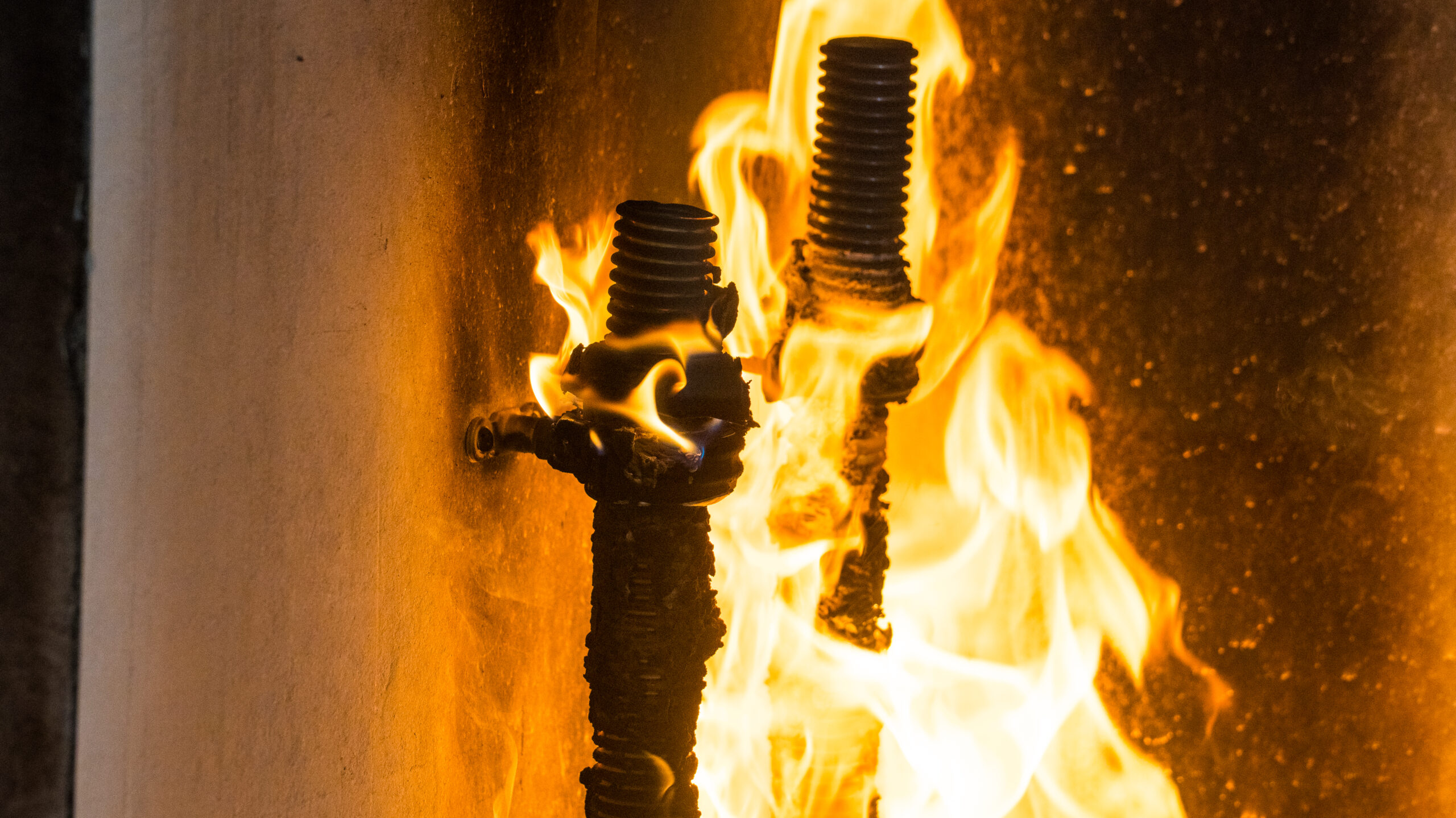
Dive deeper into the health risks associated with burning plastics
Toxic Emissions
But it’s not just about visibility. The chemical composition of the smoke presents an even graver danger. The tests revealed that plastic-based pipes release substantially more toxic gases than copper:
| Material | CO2 (mg/m³) | CO (mg/m³) | NOx (mg/m³) | HCN (mg/m³) |
| PEX | 36,985.97 | 419.31 | 14.38 | 0 |
| CSST | 21,254.99 | 360.51 | 6.96 | 1.25 |
| MLCP | 12,648.22 | 496.19 | 6.46 | 0 |
| Copper | 7.42 | 2.01 | 1.84 | 0 |
These numbers are more than just statistics, they represent a real threat to human life. Let’s put this into perspective:
Carbon Monoxide
Carbon monoxide is a poisonous gas that can make you seriously ill if you breathe it in. Symptoms of CO poisoning include headaches, dizziness, feeling sick, confusion, chest and muscle pain and shortness of breath. If exposed to high amounts of CO for one to two hours, this could lead to serious tissue damage or even death.
When burned, an MLCP pipe produces 248 times more carbon monoxide than a copper pipe in eight minutes and a PEX pipe produces 209.5 times more than a copper pipe in the same time frame.
Carbon monoxide also contributes indirectly to climate change because it participates in chemical reactions in the atmosphere that produce ozone, which is a climate change gas.
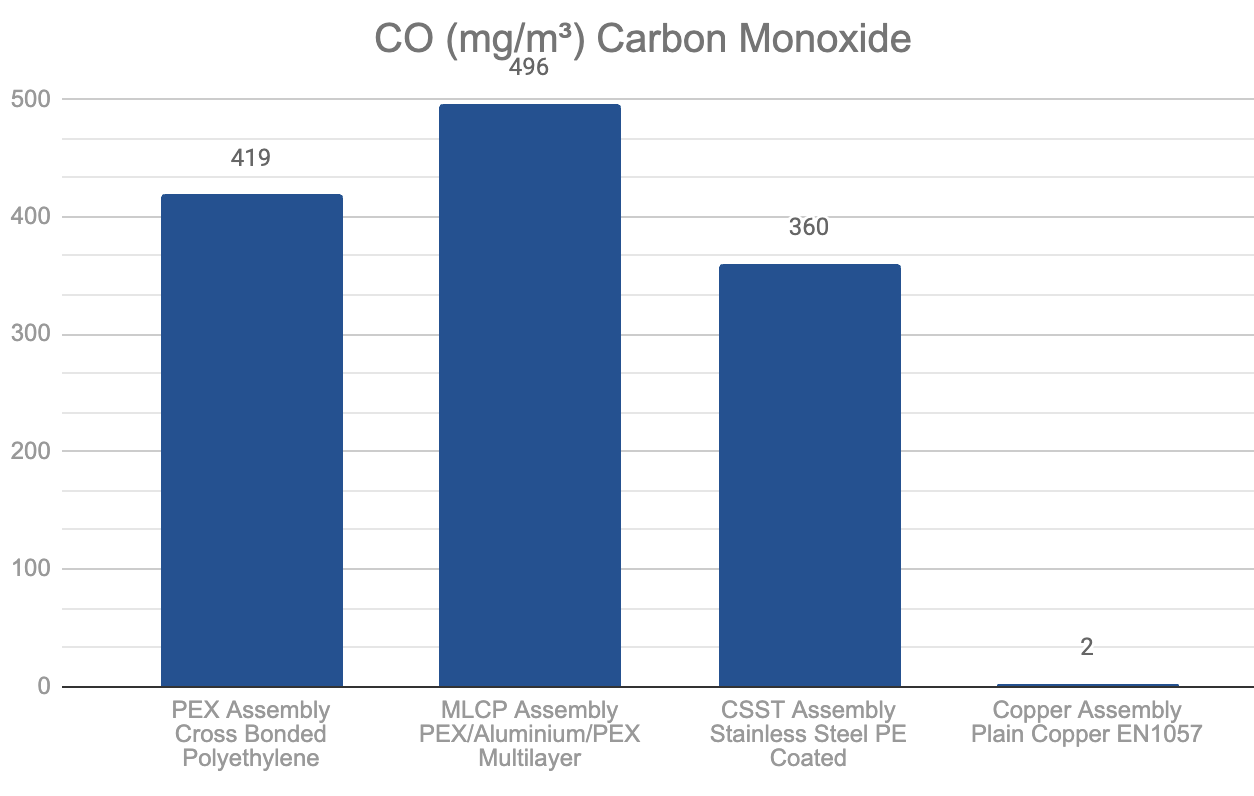
Carbon Dioxide
Carbon dioxide is minimally toxic by inhalation. The primary health effects are the result of its behaviour as an asphyxiant (reducing normal oxygen in breathing air). Symptoms of mild CO2 exposure may include headache and drowsiness. At higher levels, rapid breathing, confusion, increased cardiac output, elevated blood pressure and increased arrhythmias may occur.
When burned, a PEX pipe produces 5,284 times more carbon dioxide than a copper pipe in eight minutes, while CSST pipe produces 3,036 times more than a copper pipe in the same time frame.
Fires can add large amounts of carbon dioxide to the environment. By doing this, the natural greenhouse effect is supercharged, and this causes the global temperature to rise.
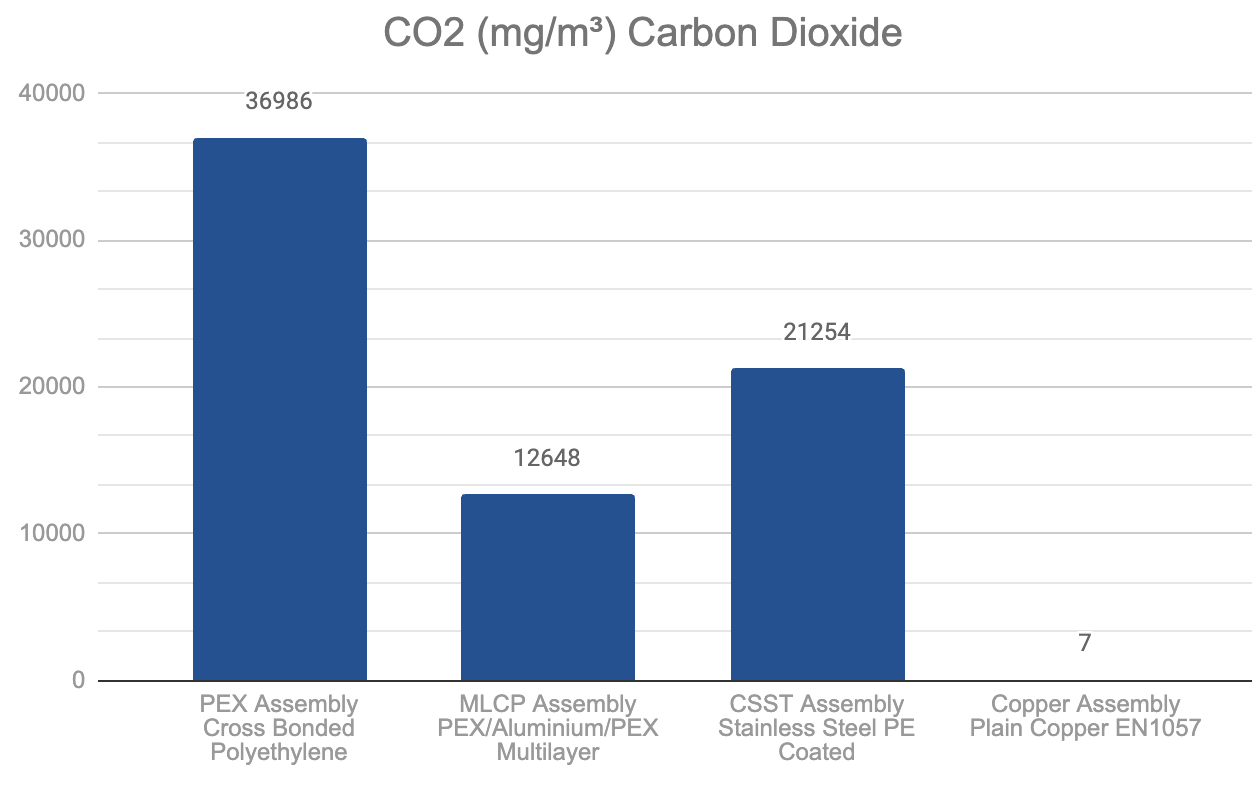
Hydrogen Cyanide
But most shockingly, MLCP pipes were found to release detectable levels of hydrogen cyanide, a compound so toxic it’s been used as a chemical weapon. Hydrogen cyanide may be fatal following exposure by all routes. The onset of signs and symptoms following exposure is rapid, with features including non-specific central nervous system (CNS) symptoms, muscular and neurological effects, tachypnoea and tachycardia. Severe features include seizures, rapid loss of consciousness, cardiorespiratory depression and collapse, pulmonary oedema, and death.
Hydrogen cyanide was found in MLCP when burned (1.25 mg/m2 emitted in eight minutes, compared to 0 mg/m2 from copper).
Did you know the MLCP pipes in your home produce cyanide when burned? This could be fatal if a fire broke out. MLCP might be quick to install, but it’s quicker to cause harm.
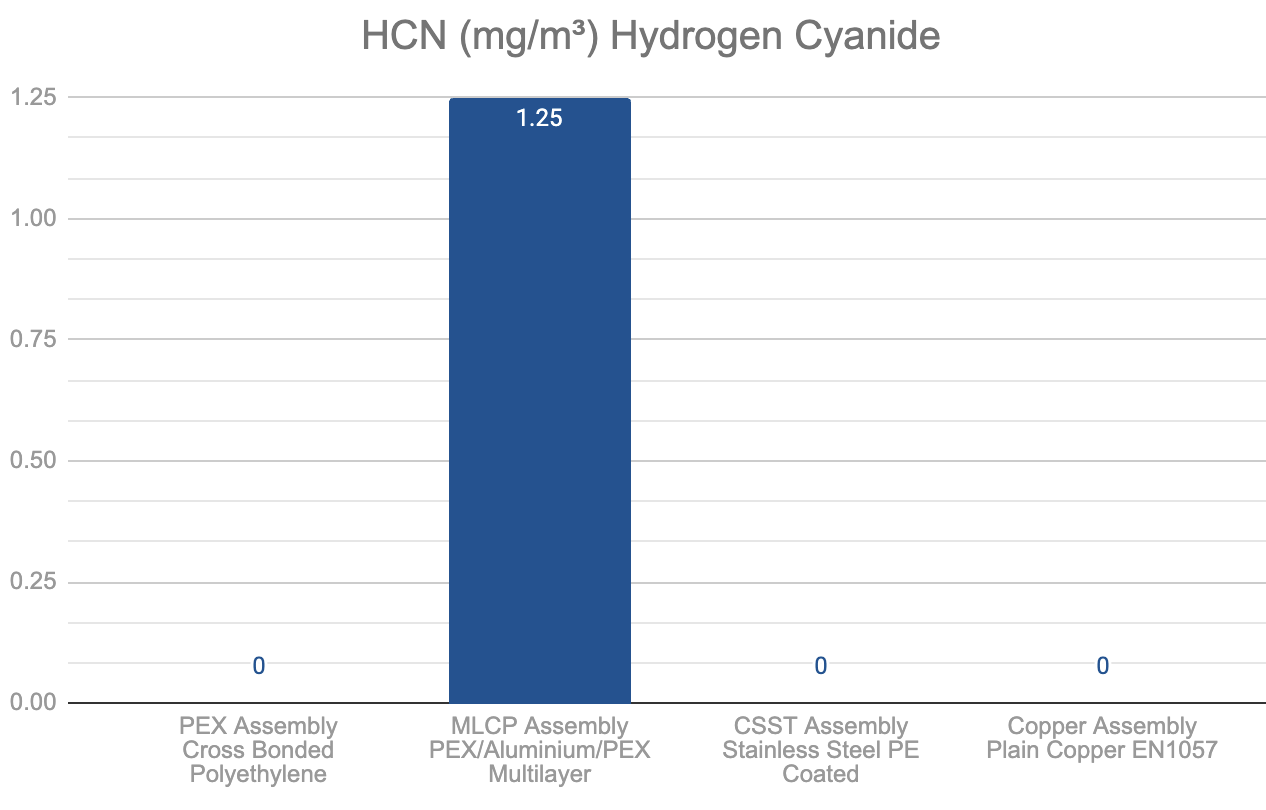
Nitrogen Oxide
Everyone is exposed to small amounts of nitrogen oxide in the air. Higher exposure to smoke can damage the respiratory airways and cause strong irritation of the eyes. Contact with skin and eyes can cause burns.
When burned, a PEX pipe produces 7.8 times more nitrogen oxide than a copper pipe in eight minutes.
Nitrogen oxide will also react with other air pollutants to form ground-level ozone. Ozone is a gas which is damaging to human health and can trigger inflammation of the respiratory tract, eyes, nose and throat, as well as asthma attacks.
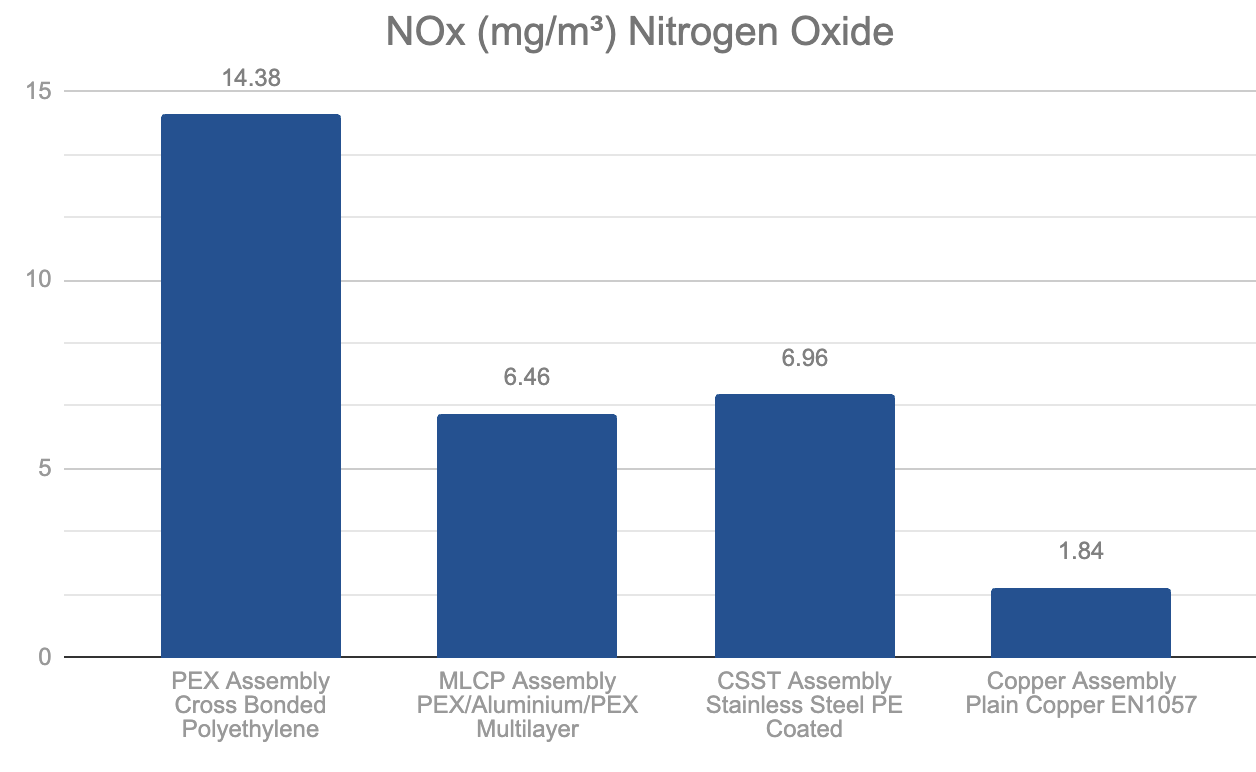
Learn more about the dangers of burning plastic
Long-Term Health Impacts
The dangers of plastic pipes extend far beyond the immediate fire scenario. Exposure to these toxic fumes, even if not immediately lethal, could potentially lead to long-term respiratory issues or other health problems for survivors.
A recent article in Inside Housing highlights the devastating long-term health impacts on firefighters exposed to toxic smoke. One in four Grenfell firefighters now suffer from long-term health disorders due to exposure to toxic smoke. This underscores the potential risks not just to building occupants, but also to the brave individuals who respond to fire emergencies.
A further study published in Scientific Reports further highlights the dangers of burning plastic faced by firefighters. The study, which surveyed over 10,000 serving firefighters in the UK, found that over 4% had received a cancer diagnosis, with the age-specific cancer rate up to 323% higher than that of the general population.
If trained firefighters with protective equipment are suffering these effects, imagine the impact on unprotected civilians trapped in a building with burning plastic pipes.
Fire Spread
| Material | Burn Time |
| PEX | 02:43 |
| MLCP | 05:03 |
| CSST | 09:11 |
The higher smoke density from plastic pipes could potentially accelerate fire spread by preheating surrounding areas. CSST pipes allow fire to spread the quickest, followed closely by PEX. All it takes is less than 3 minutes for a PEX pipe to burn completely in a house fire. Unlike the plastic pipes, the copper didn’t burn.
The specification of plastic pipes, especially MLCP in vertical voids in high-rise apartments and office blocks, is not only irresponsible but bordering on negligent. This practice creates vertical fire highways, potentially turning a localised incident into a building-wide catastrophe.
Increased smoke production, especially from CSST and PEX, could lead to more extensive smoke damage throughout a building, even in areas not directly affected by flames. This means that even if the fire is contained to one room, the toxic smoke from burning plastic pipes could render the entire building uninhabitable.
The Advantages of Copper
In contrast to the alarming performance of plastic pipes, copper stands out as the safest material for piping in built environments. With a high melting point of 1,085°C, higher than the temperature of most building fires, copper pipes maintain their integrity under extreme conditions.
Copper does not burn in a fire, making it the most reliable pipe material for your home. It produces negligible smoke, little to no toxic emissions and CIT value of 0, ensuring that in the event of a fire, it won’t contribute to reduced visibility or pose risks to human health.
Learn more about coppers role is fire safety
Making the Right Choice
The data presented here paints a clear and urgent picture: plastic pipes pose significantly higher risks in fire situations compared to copper pipes, both in terms of smoke production and toxic gas emissions. While plastic pipes might be quick to install, they’re quicker to cause harm in a fire scenario.
By choosing copper pipes, you’re not just selecting a plumbing material, you’re potentially saving lives. The marginal price difference of copper is far outweighed by its critical safety performance. In light of these findings, continuing to use plastic pipes in high-risk areas could be seen as a form of negligence on the part of construction companies.
Remember, in a house with plastic pipes like MLCP or PEX, a fire could be fatal. By installing these pipes in someone’s house, you could be putting their life at risk. Act now, choose copper pipes to potentially save a life.
Paul Hagar, Executive Director of Safe Piping Matters, explores in greater detail the fire safety risks of plastic pipes compared to copper pipes in the seminar below.
Building Safety and Regulation
The findings from these tests raise serious questions about current building regulations and practices. Are we doing enough to protect people from these hidden dangers? Should the use of plastic pipes be more strictly regulated, especially in residential buildings and high-occupancy structures?
The answer, based on our data, is a resounding no.
The use of plastic pipes, especially in residential buildings and high-occupancy structures, should be more strictly regulated. Current regulations are inadequate in addressing the fire safety risks posed by these materials. We call for immediate action to review and strengthen building codes to prioritize fire safety over short-term cost savings.
At CUSP, we believe that safety should always come first. We’re committed to raising awareness about these issues and promoting safer building practices. Our range of copper piping solutions offers not just superior fire safety, but also durability, reliability, and peace of mind.
Learn more about the risks of plastic in fires
Take Action
Don’t wait for tragedy to strike or for regulations to catch up with the science. If you’re building, renovating, or simply concerned about the safety of your current plumbing, consider making the switch to copper pipes. It could be the most important decision you ever make for your home’s safety.
For industry professionals, it’s time to take a stand. Rethink the installation of plastic pipes in high-risk areas. Advocate for safer practices and materials. Your expertise and influence can help drive the necessary changes in regulations and industry standards.
Remember, when it comes to fire safety, every second counts. Don’t let plastic pipes put lives on the line. Choose copper – because safety should never be compromised.
